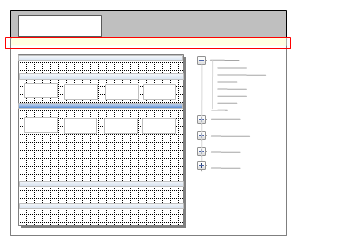Edit mode lets you add, move, delete and format the content of a source, model or report.
In this topic
Read-only mode protects your sources and models by preventing users from accidently deleting, moving or changing content. Sources and models open read-only and you must switch to edit mode if you want to change the content.
In a shared server project, edit mode ensures that team members do not make conflicting changes—only one user at a time can have a source,model or report open in edit mode.
The status bar, at the bottom of the NVivo window, shows whether a source, model or report is read-only or editable:
![]()
On the Home tab, in the Item group, click Edit.
Keyboard shortcut To switch between modes, press CTRL+E

The Edit image is highlighted when the source is in edit mode.
NOTE
The Edit image is highlighted when a source or model is in edit mode.
When a source, model or report is read-only, a yellow information bar is displayed at the top of Detail View—you can click the yellow bar to switch to edit mode.
Most of the time, you should work with your sources in read-only mode—when a source is read-only you can code, annotate and link the content.
Since read-only mode protects your sources from accidental changes, you should only switch to edit mode, when you need to modify the content of a source—for example, you want to transcribe a video or add text to a document or memo.
When you first create or import a new source, it automatically opens in edit mode—the next time you open the source, it is read-only. When a source is read-only, a yellow information bar appears at the top of Detail View. If you need to change the content, click the yellow bar to switch to edit mode.

In a server project, edit mode gives you exclusive access to source content—when you have a source open in edit mode, other team members can view the source, but they cannot edit text, code, annotate, or add ''see also' links to selected content.
NOTE Edit mode is not available for PDF or dataset sources. If you are working with a dataset, you can filter, sort and reorder columns, but you cannot change the textual content.
When a model is read-only you cannot make any changes—for example, you cannot add or remove shapes.
If you want to make changes to the model, you must switch to edit mode. When a model is in edit mode you can add, edit, delete or format the shapes and project items.
Static models are 'snapshots' that cannot be changed—edit mode is not available for static models.
When you first create a model, it is dynamic and automatically opens in edit mode—the next time you open the model, it is read-only. When a model is read-only, a yellow information bar appears at the top of Detail View. If you need to change the model, click the yellow bar to switch to edit mode.

In a server project, edit mode gives you exclusive access to model content—when you have a model open in edit mode, other team members can view the model, but they cannot make any changes to it.
When you open a report in the Report Designer, it opens in edit mode and you can make changes to the report if you want to.
In a server project, edit mode gives you exclusive access to the report design—when you have a report open in edit mode, other team members can view (or run) the report, but they cannot make any changes to it.
If you are working in a server project and your report opens read-only, this means that someone else has the report open in edit mode. When the report is read-only, a yellow information bar appears at the top of Detail View, and you cannot make changes to the report—for example, add or remove fields or change the report title. When the other person has closed the report, you will be able to switch to edit mode.
